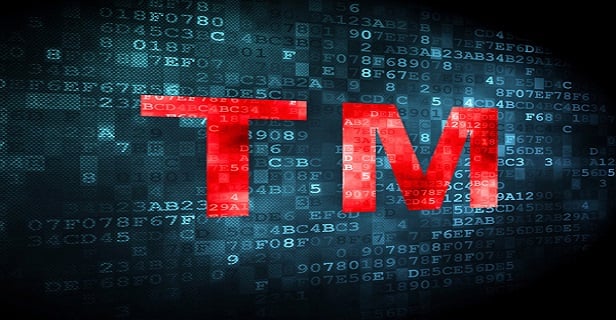Features

New Decisions In Disputes Over Titles Reinforce 'High Bar' In Proving Public Was 'Explicitly Misled'
When it comes to expressive content, disputes over trademark rights in titles of creative works are commonly fought under the federal Lanham Act. Many of these battles play out in courts in the U.S. Circuit Court of Appeals for the Ninth Circuit, which has well-developed legal guidelines on the subject — many of them from lawsuits that have arisen in the entertainment industry.
Features

WTF? The Board Weighs In on Failure to Function Refusals
Many trademark practitioners have noted the USPTO's recent penchant for issuing refusals to register trademarks on the ground of failure to function as a trademark. The Trademark Trial and Appeal Board picked a colorful case to set precedent and provide some initial guidance on how it will evaluate failure-to-function refusals going forward.
Columns & Departments

IP News
Federal Circuit: Trade Dress Imitation In the Ninth Circuit
Features

Federal Judge Takes Aim at Legal Process for Targeting Counterfeit Merchandisers
The rebound in concert tours and ticket revenues as 2022 has unfolded gives the live events industry hope for a strong 2023, too. For many tours, though, it's income from merchandise that makes the tour profitable. Thus, the rise in the number of artists touring also means a parallel resurgence in the activities of counterfeit-merchandise sellers and renewed efforts by the industry to battle its long-time problem with the sale of counterfeit merchandise near event venues.
Features

IP Rights In the Metaverse
The metaverse, an immersive virtual experience building on the Internet and the physical world, has become a prominent force in branding and marketing for companies struggling to keep up in an ever so globalized economy. Parallel to this digital expansion has been a surge of intellectual property issues.
Features

Protecting a Trademark Licensor's Rights In a Bankruptcy Case
A recent bankruptcy case from the District of Delaware underscores the need for a trademark licensor to be alert to filings made in its licensee's bankruptcy case that may require prompt action by the licensor to protect its valuable rights under a license agreement.
Features

Digital Advertising: Customer Confusion and Trademark Infringement
In the absence of a federal statutory scheme specifically aimed at digital advertising practices, the courts have focused on consumer-facing issues covered by existing law, such as privacy, transparency, and deceptive or misleading advertising practices. But digital advertising technology can also present new challenges in copyright and trademark protection.
Features

Quebec's Bill 96 and Trademarks: Product Packaging and Labelling
The modifications brought by the Quebec's Bill 96 will have a far-reaching impact on how businesses use trademarks on product packaging, labelling, public signage and in commercial advertising. This article is Part One of a two-part series on Bill 96 and trademarks and covers the effects as they relate to product packaging and labelling and how best to comply with these new provisions.
Features

Proper Notice of Trademark Rights: Using Trademark Symbols for Three-Dimensional Packaging and Product Designs
Among the most common questions trademark attorneys are asked is what the differences are between the symbols ®, TM, and SM. When should such symbols should be used? Where should they appear? How frequently? Do they even need to be used at all?
Features

Brands In the Metaverse: What You Need to Know
While it is still unknown how the metaverse will take shape, lawyers advising brands should familiarize themselves with the opportunities it presents, the risks involved, and strategies to consider for enhancing and protecting a client's brand.
Need Help?
- Prefer an IP authenticated environment? Request a transition or call 800-756-8993.
- Need other assistance? email Customer Service or call 1-877-256-2472.
MOST POPULAR STORIES
- Major Differences In UK, U.S. Copyright LawsThis article highlights how copyright law in the United Kingdom differs from U.S. copyright law, and points out differences that may be crucial to entertainment and media businesses familiar with U.S law that are interested in operating in the United Kingdom or under UK law. The article also briefly addresses contrasts in UK and U.S. trademark law.Read More ›
- The Article 8 Opt InThe Article 8 opt-in election adds an additional layer of complexity to the already labyrinthine rules governing perfection of security interests under the UCC. A lender that is unaware of the nuances created by the opt in (may find its security interest vulnerable to being primed by another party that has taken steps to perfect in a superior manner under the circumstances.Read More ›
- Impact of Disney's Motion to Compel Arbitration In Scarlett Johansson's Lawsuit Over 'Day-and-Date' Release of 'Black Widow'Johansson alleges that, in order to generate new subscribers for Disney+, Disney intentionally interfered with her talent agreement with Disney affiliate Marvel Studios for her featured role in Black Widow — and thus allegedly induced Marvel to breach a promise in the Johansson/Marvel agreement for the film to be initially distributed in exclusive "wide theatrical release." Updated Oct. 1 to reflect a confidential settlement reached in the case.Read More ›
- Non-Monetary Defaults in Commercial Leases: A Difficult Eviction"I want them out!" When a tenant stops paying rent, landlords usually have this reaction. But what about those tenants faithfully paying rent while breaching other provisions of the lease? This article examines the eviction of a commercial tenant for non-monetary defaults.Read More ›
